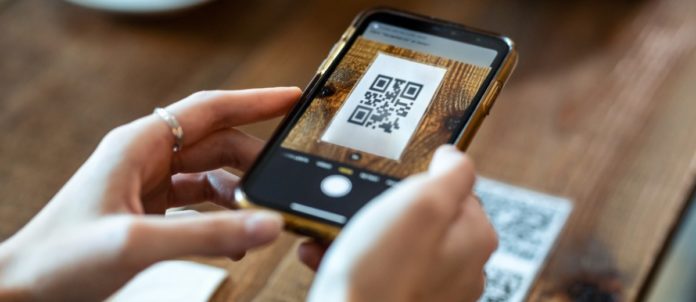By Laurent May, CEO of Ready
We can attribute much of the scannable code’s current ubiquity to the COVID-19 pandemic. In most Canadian provinces, such as British Columbia, Ontario and Newfoundland, QR-based vaccine passports are a requirement, and many of us are starting to grow accustomed to flashing our code in order to get into restaurants and other places of business.
Quick-response (QR) codes have been around for decades, but they only found widespread adoption in hospitality when the pandemic forced restaurant operators to implement a contactless solution to the health-and-safety challenges of the coronavirus. As a result, half of all full-service restaurant operators across the U.S. have implemented QR-code menus since the start of the pandemic, according to The New York Times. In Canada, three in five Canadian consumers reported having scanned a QR code at a restaurant or grocery store in the month prior to a survey conducted by Dalhousie University’s Agri-Food Analytics Lab.
Going beyond the menu
Consumer expectations are growing more sophisticated as the tech behind the code continues to evolve and expand. Simply having a QR-code enabled PDF menu isn’t enough; guests have come to expect interactive digital menus, which restaurants can update and customize. In this era of supply-chain disruptions, QR-code menus allow restaurants to quickly and easily remove items that they’re unable to offer. They can also remove items that are out of stock on the fly, avoiding the inevitable disappointment when a customer requests an item that’s no longer available.
Using their phones, guests check the menu as soon as they sit down and review it any time. Many restaurants have also adopted guest-facing technologies that go beyond the menu, seamlessly bridging guests’ personal mobile devices and operators’ POS systems to enable diners to order and pay at their table without having to flag down their server, with the added benefit to the operator that guests tend to order more.
Ordering and paying at the table can have the net effect of increasing the restaurant’s table turnover rate, thus boosting operational efficiency and giving front-of-house staff a bit of relief at a time when the industry is still grappling with labour shortages. QR codes can also reduce the time spent on mundane tasks, such as wiping down physical menus.
People dine out for the experience, so a restaurant needs to be more than just another food-delivery service. Servers provide value that goes far beyond operational duties. They can give a restaurant that much-needed human touch, and that’s why QR codes can never replace people. With customers taking aspects like ordering and paying into their own hands, servers can focus less on logistics and more on meaningful touchpoints that enhance the guest experience like establishing rapport and understanding diners’ needs.
Tracking consumer behaviour
With QR-code analytics, restaurants can access valuable, actionable data on repeat customers, ordering times, and more. They can combine this with POS operational data to assess any adjustments that need to be made to enhance the overall dining experience. QR codes help keep track of consumer behaviour in order to highlight what’s working and what could be improved. For example, a code can be used to present guests with a post-payment survey and offer them the opportunity to provide written comments directly to management. This feedback can be traced back to any given location, time, order or server.
Recommendations help boost revenue when operators use this data to suggest add-ons or side dishes. If you know that a guest ordered a particular item during their most recent visit, you can move it to the top of the menu for next time, and while you’re at it, you can also recommend that they add a milkshake or a side of fries to their order. The rapid adoption of QR codes might have started as the industry’s response to an unprecedented public health-and-safety crisis, but the continued growth of this technology is being driven by consumer demand. In fact, majority of adults would like to see technology implemented to make ordering and paying easier, according to the National Restaurant Association.
It looks as if the age of the QR code is really just beginning.
Laurent May is the CEO of Ready, a fully integrated mobile self-ordering, payment and loyalty technology solution that’s defining the next generation of hospitality venues. He has more than 20 years of product-management expertise in the electronic-payments space leading high-performance teams.





















